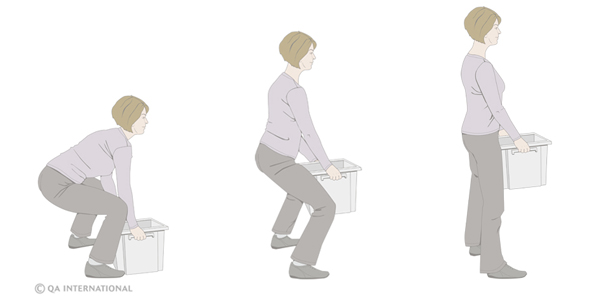With all of the recent news about avoiding refined sugar and high fructose corn syrup (HFCS), it’s hard to know what’s safe to use to sweeten foods and drinks. And it is a question to be concerned with, because there can be dire health consequences even when a sweetener is marketed as “healthy.”
Recently,
a National Geographic article[1]
compared eight sugar substitutes, which they separated into four categories:
1.
Artificial sweeteners
2.
Sugar alcohols
3.
Natural sweeteners
4.
Dietary supplements
While
National Geographic made a good start, its review of these products lacks any
information about the adverse effects of many of them. Despite all the evidence
of the harm sugar substitutes do to the human body, they are often still
promoted by “experts” because they allegedly aren’t digested.
According
to Dr. Joseph Mercola, a well-known osteopathic physician and best-selling
author, all artificial sweeteners
should be avoided because all of them present their own harmful side effects.
From his research, he concluded that aspartame (NutraSweet, Equal) may be the
most dangerous of all the sugar substitutes. It has the largest number of
reports of adverse effects, which may be because it is the most widely used
substitute.
You
must be mindful of the advertisements and promotions that big companies like
Coca-Cola use in an attempt to convince consumers that aspartame is okay. In
response to Coca-Cola’s new advertisement, Center for Science in the Public
Interest’s (CSPI) Executive Director, Michael F. Jacobson, made the following
statement:
“Aspartame
has been found to cause cancer—leukemia, lymphoma, and other tumors—in
laboratory animals, and it shouldn’t be in the food supply. We certainly want
Coca-Cola to shift its product mix toward lower- and no-calorie drinks, but
aspartame’s reputation isn’t worth rehabilitating with this propaganda
campaign. The
company would be better off phasing out its use of aspartame and accelerating
its research into safer, natural sweeteners such as those extracted from the
stevia plant.” [2]
Drinking
diet sodas and other diet drinks not only fails to lead to weight loss—studies
have actually shown that they can cause greater weight gain than regular sugar. In addition, artificial sweeteners have
been linked on more than one occasion with increased hunger.
A
recent report also showed that artificial sweeteners can cause many of the same
harmful effects of high sugar consumption (which defeats the purpose of
consuming them, really). These effects
include, but are not limited to, excessive weight gain, cardiovascular disease,
type 2 diabetes, and stroke. According to the authors of this report,
“consuming sweet-tasting but noncaloric or reduced-calorie food and beverages
interferes with learned responses that normally contribute to glucose and
energy homeostasis. Because of this interference, frequent consumption of
high-intensity sweeteners may have the counterintuitive effect of inducing
metabolic derangements.”[3]
If
aspartame and similar sugar substitutes cause these problems, what about the
“all natural” sweeteners? Despite what you may think, sweeteners like honey and
agave are high in fructose and many are highly processed. Agave “nectar” or “syrup”
can have anywhere from 70-97% fructose content, depending on the brand. Honey
averages about 53%, which is obviously an improvement, but unlike agave, it is
natural in its raw form and actually has health benefits when used in moderation. Still, remember that it’s rare
to find high-quality, raw honey in just any grocery store.
“Regardless
of the source (be it HFCS, honey, or agave), refined fructose:
- Tricks your body into gaining weight by fooling your metabolism, as it turns off your body's appetite-control system. Fructose does not appropriately stimulate insulin, which in turn does not suppress ghrelin (the "hunger hormone") and doesn't stimulate leptin (the "satiety hormone"), which together result in your eating more and developing insulin resistance.
- Activates a key enzyme that causes cells to store fat; this is the so-called “fat switch” revealed in Dr. Richard Johnson’s book by the same name.
- Rapidly leads to weight gain and abdominal obesity ("beer belly"), decreased HDL, increased LDL, elevated triglycerides, elevated blood sugar, and high blood pressure—i.e., classic metabolic syndrome.
- Is broken down in your liver just like alcohol, and produces many of the side effects of chronic alcohol use, including non-alcoholic fatty liver disease (NAFLD). Interestingly enough, research has shown that soft drinks increase your risk of NAFLD independently of metabolic syndrome9.
- Over time leads to insulin resistance, which is not only an underlying factor of type 2 diabetes and heart disease, but also many cancers.”[4]
Sugar
alcohols (which you can usually recognize by the “ol” at the end of their name:
xylitol glucitol, sorbitol, maltitol, mannitol, glycerol, and lactitol) aren’t
as sweet as sugar, but they do contain fewer calories and can be a better
choice than highly refined sugar. Of the sugar alcohols, xylitol is reasonably
safe and is the best choice of the sugar alcohols.
The
three safest alternatives to sugar are Stevia (not Truvia, which only uses certain active ingredients of the South
American stevia plant and not the entire plant), Lo Han Guo/Lo Han Kuo, and
pure glucose. Lo Han Guo/Kuo comes from the Lo Han fruit, which has been used
as a sweetener in China for centuries and is much, much sweeter than sugar.
Interestingly, it received FDA GRAS (Generally Recognized as Safe) status in
2009. Pure glucose is not as sweet as regular sugar, so you will likely use
more of it and, thus, it is more expensive. Still, it contains no fructose at all and can be used
“directly by every cell in your body and as such is a far safer sugar
alternative.”[5]
 It
should go without saying that any sweetener at all can lead to harmful side
effects for your body. The best option is to avoid sweet foods and beverages
altogether, but if you have a hard time doing this, try to use the three safest
sugar alternatives mentioned above. If you’d like to do further reading on this
topic, I suggest Dr. Mercola’s book, Sweet
Deception.
It
should go without saying that any sweetener at all can lead to harmful side
effects for your body. The best option is to avoid sweet foods and beverages
altogether, but if you have a hard time doing this, try to use the three safest
sugar alternatives mentioned above. If you’d like to do further reading on this
topic, I suggest Dr. Mercola’s book, Sweet
Deception.
[1]
Anderson P. “How Sugar Substitutes Stack Up.” July 17, 2013. National Geographic. http://news.nationalgeographic.com/news/2013/07/130717-sugar-substitutes-nutrasweet-splenda-stevia-baking/
[2]
Michael F. Jacobson. “Coke Shouldn’t Bother Rehabilitating Aspartame’s Image,
Says CSPI.” August 14, 2013. http://cspinet.org/new/201308141.html
[3]
Swithers SE. “Artificial sweeteners produce the counterintuitive effect of
inducing metabolic derangements.” 2013. Trends
in Endocrinology and Metabolism: pp.1-11.
[4] Mercola.
“Sugar Substitutes—What’s Safe and What’s Not.” October 7, 2013. http://articles.mercola.com/sites/articles/archive/2013/10/07/sugar-substitutes.aspx#_edn2
[5] Id.








